Painting is a relatively quick, easy, and affordable way to spruce up your family’s home or commercial property. Not to mention it is a popular DIY home improvement project. But even though you can apply paint on the surface, you still need to figure out what you’re doing. It also means you’ll achieve something other than the results you want.
Painting is much more work than dabbing a fresh coat of paint over the exterior or interior surfaces. Remember that doing the job right at the start will help you avoid potential problems. You don’t wish to repaint your home or commercial property over and again to correct your errors. It would also mean unexpected expenses and the extra time needed to repair that you may not have to spend.
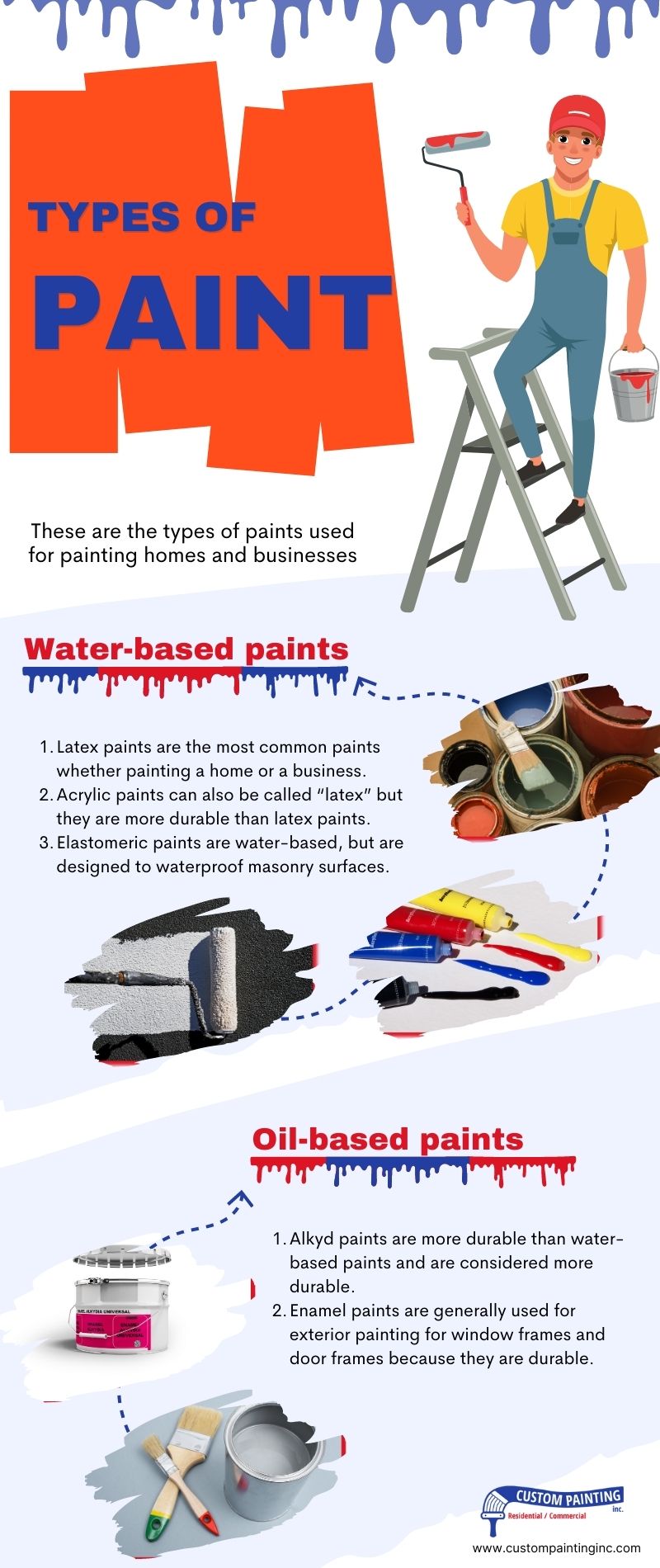 Knowing the painting essentials
Knowing the painting essentials
If you are thinking about painting a room, hallway, or the exterior of your home, it’s pretty handy to know the following paint basics before heading to the paint store:
1) Know your home’s square footage
Planning is the key to a successful painting job. It enables you to budget accordingly and end up with the expected results. You can derail your budget if you don’t plan right for your project. For example, if you find yourself running out of paint while in the middle of the project adds more time and expenses. Go to this step-by-step guide to determine how much paint your home or commercial property requires by measuring its square footage.
2) Check the weather forecast
If you include exterior painting in your project, it’s essential to look at the weather situation in your area first. It’s best to paint when it’s not raining, snowing, hot, cold, or humid. Ensure that the relative humidity in your area is between 40% and 70%.
Compared to exterior painting, you can do interior painting no matter the day and in any weather. However, it is still important that your room has sufficient ventilation to help the paint dry more quickly and dissipate some harmful fumes as the paint dries. Open the door and windows and run exhaust fans as continually as possible to prevent the paint fumes from recirculating into the room.
3) Never skip prep work!
Some DIY painters rush to the painting part without preparing the surfaces first. But remember that if the surface is prepared or is properly prepared, the paint will stick to it. It won’t matter if you initially spend extra money on premium paint. Painting over an unprepared surface will result in various problems, such as cracking and peeling.
Here are the following ways to prepare your surface before you paint:
- Cleaning or washing the surface and allowing it to dry
- Sanding the areas that are peeling, chipping, and cracking
- Making the necessary repairs, such as filling cracks and holes
- Caulking joints
- Priming (optional, depending on the original surface).
Custom Painting, Inc. takes the time to thoroughly prep each surface so that your paint can last for many years.
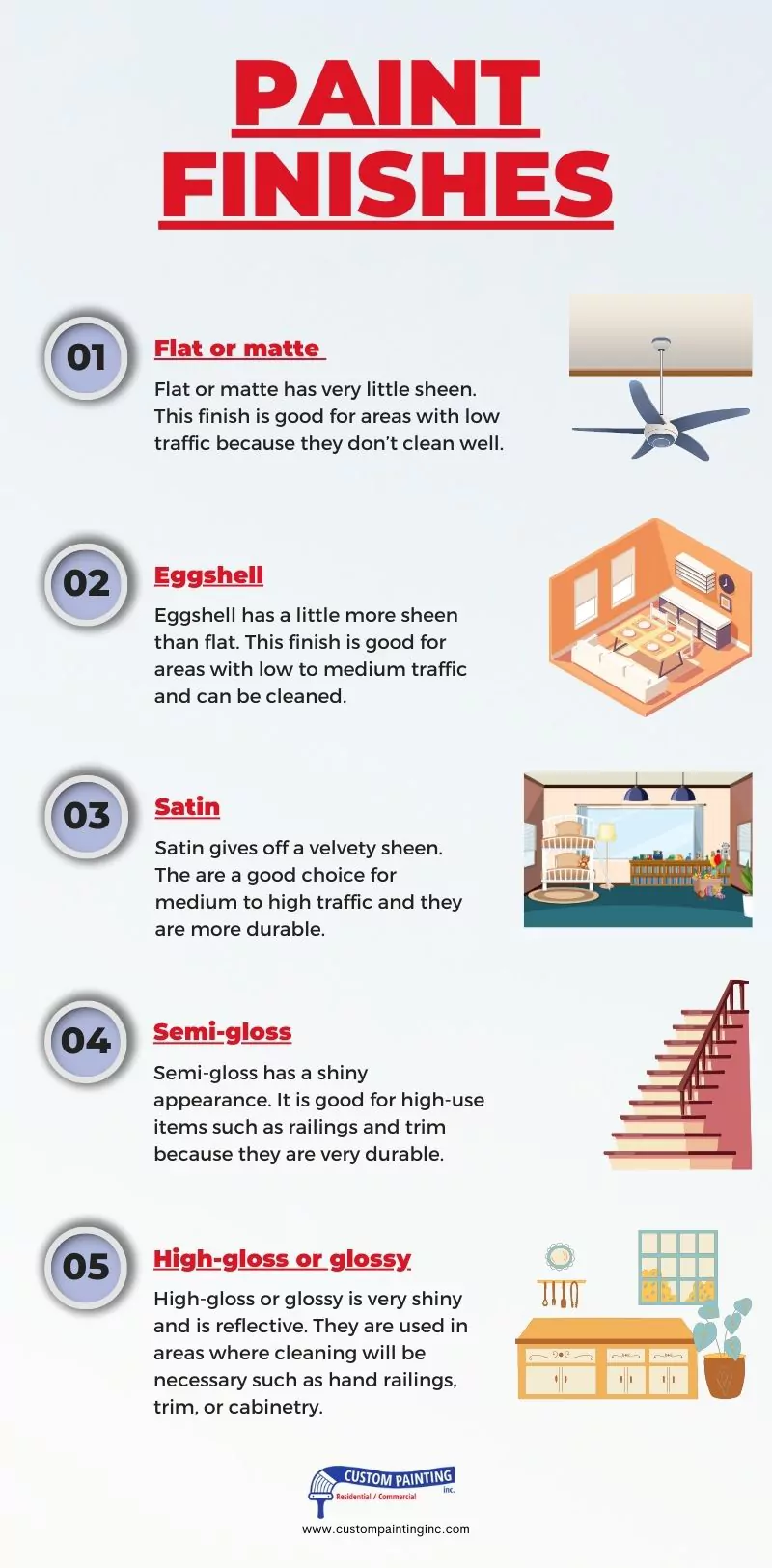
Try to avoid painting over an area that has started to dry. This most often occurs in a minute or less in dry conditions. Doing so will leave unsightly lap marks. To prevent this, maintain a “wet edge,” meaning every new stroke must overlap the previous stroke. If you’re using a roller, paint the full height of the wall, up and down.
5) Plan for a drying time
After applying paint to any surface, allow the surface at least 24 hours of drying time before applying the second coat of paint or bringing back the furniture and re-installing wall decor and light fixtures. If you add the second coat too quickly, you may damage the previous coat. You may also scuff your furniture against paint that is not completely dry, getting paint on the furniture and having to touch up what was damaged. By allowing at minimum 24 hours to dry, you can feel confident you won’t damage the paint.
6) Press the painter’s tape to prevent bleeding
Nothing is worse than finishing a paint job, allowing it to dry, and peeling the tape off the wall – only to see the paint bled through unsealed areas.
To prevent this from happening, use a scraper, putty knife, or something else (even your old credit card) to press the painter’s tape down firmly. That will create a good seal so the paint won’t bleed through. Pressing the painter’s tape down will also keep the edge crisp.
Remember, use ONLY painter’s tape – not masking or any other tape.
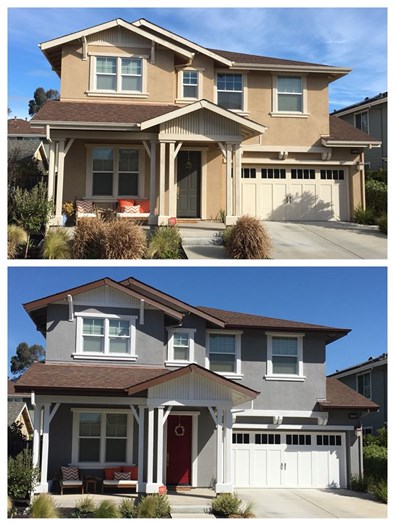
Never stress yourself – you can change the paint color; it doesn’t have to be permanent. Fortunately, paint is an inexpensive way to spruce up and update a room or an exterior. If you don’t like the color you used, you can change it by easily painting over it.
Also, if the color seems too vivid for your interior walls, consider leaving one wall painted in that color as an accent. On the other hand, if your room looks too bland, paint one wall in a bright color as an accent. That way, it will create design interest without overwhelming your space.
8) Finishing is important
It’s not just the color that you should consider when choosing paints – it’s also the finish, which is very important. Depending on the type of surface or function of the room you’ll be painting, you can choose flat (or matte), eggshell, satin, semi-gloss, or glossy.
Glossy paints are suitable for kitchens, bathrooms, hallways, playrooms, laundry rooms, and other areas that experience high traffic and constant fluctuation in temperature and humidity. Less glossy paints, on the other hand, are ideal for low-to-medium traffic areas, such as the bedroom, living room, nursery room, powder room, and guest bathrooms.
Glossy paints are more durable and easier to clean but do poorly at hiding stains and marks. Flat paints, conversely, are good at concealing flaws but less durable than glossy paints.
9) Remove the painter’s tape in the correct way
Once you’re done with your painting job, you can’t wait to get your room back in place. So, you try to remove the paint off the trim, only to make a mess of your hard work. If you peel the paint too early or do it without the proper tools, the dried paint could come off with the tape.
To avoid that, wait at least 24 hours before removing the tape. Use a sharp utility knife and cut through the film, then gently pull the painter’s tape up at a 45-degree angle while cutting the paint.
10) Mix paints for a consistent color
Even if you buy several cans of paint of the same color, the colors may vary slightly between the various paint cans once applied to the walls. If your job needs you to buy more than one can of paint, mix all of the paints into a five-gallon bucket to achieve a uniform color. This method is called “boxing.”
11) Which comes first: walls or trim?
If you include the trim in your painting project, consider painting it first, then the ceiling, and finally, the walls. This order is because it is much quicker to tape off the trim in the room than on the walls. Professionals usually paint in this way.
12) Worrying about those ugly marks? Use a paint extender.
Sometimes, many professionals need a little help to achieve a flawless painting finish. They get that help from a paint extender as their “secret weapon.” However, paint extenders are so easy to use that you might not need a professional to paint your space. Also called a paint conditioner, a paint extender provides a finish free of unsightly brush and lap marks. The purpose of the paint extender is to slow down the drying time, thus enabling you to overlap freshly painted areas without getting ugly brush or lap marks, a common problem with paint over dried paint.
Another benefit of the paint extender is its ability to level out the paint, making brushstrokes and roller marks less noticeable, if not eliminated. Professionals use paint extenders on drywall, cabinets, woodwork, and doors.
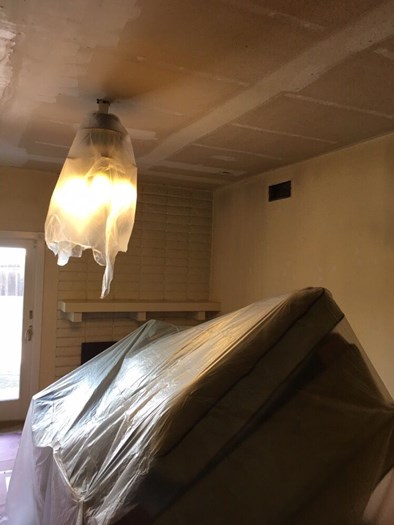
If you cannot or don’t want to move out furniture, push them to the center of your room and then cover them with drop cloths or plastic sheets. If you cover furniture with plastic sheets, tape them to the floor. This cover protects furniture from stray paint drips, splatters, and sanding dust.
14) Use tinted primer
Instead of using white primer straight from the can, tint the primer with a bit of gray paint or the color of your finishing paint. Tinted primer does a much better job of covering up the old paint and concealing the patched areas, and you’ll end up with a paint finish that looks vibrant. Another benefit of using a tinted primer is that you need fewer coats of the finishing paint, saving you time and effort.
15) Invest in the best supplies
Like you don’t want to use cheap paints, don’t go cheap over brushes, rollers, and other tools. These cheap paints and tools are a false economy. For example, you may think you are saving money by buying a $3 paintbrush, but it will make it appear like you’ve just smeared some paint on the wall. Also, its bristles may even fall off or get stuck in the paint on the surface.
Purchase the best brushes, rollers, roller covers, extension poles, drop cloths, painter’s tape, step ladders, and other essential paint tools you can afford. They will last a lifetime, even after several uses, especially if you clean and maintain them. However, you can cheap out on materials such as paint trays, buckets, plastic sheeting, and clean rags.
16) Don’t forget safety
Always consider safety in everything you do in your project, from choosing paints to working the high walls. When buying paints, make sure that they don’t contain lead or high levels of VOCs, especially if you plan to do interior painting.
When using a step ladder as you prep or paint, it’s best to go for Grade 1 ladders, which are strong, stable, and can hold up to 250 pounds. Place the ladder on a solid surface that is level, or use stabilizers to keep your ladder in place as you work the high walls and ceilings.
17) Know the type of surface you’re going to paint on
Knowing which type of surface you will paint on is vital because it helps you determine the correct paint. If you will paint woodwork, for example, purchase acrylic paint, latex paint with a semi-gloss or glossy finish, or enamel paint. If you paint concrete or cement walls, choose latex paints. Using the wrong paint type may cause problems like peeling, flaking, or blistering, ultimately ruining your finish.
18) Choose the right colors
Faced with hundreds of paint colors and hues with notable names like “Whisper White,” “Nuevo Terra,” “Coming Up Roses,” and others, the task of choosing the right color can be daunting.
There are some things to think about before choosing the right color. These things include how color affects a space and how you intend to sell your home or commercial building. For example, if you plan to sell the property in less than a year, it’s best to paint it in neutral colors.
The size of the space may also help you decide. To make a small space big and bright, painting it with white or lighter colors could be a good idea. Or, if you want a roomy space to feel smaller and cozier, consider painting it with darker colors.
Colors can also affect one’s mood or evoke emotions. Red is warm and passionate, yellow and orange are warm and cheery, while greens and blues are cooler and more calming colors.
A professional color consultant will be able to help you understand color psychology and how these spaces painted in those colors make us feel or think. While the choices are yours, consulting a color expert can be very helpful in a more informed decision to get the best look for your home or commercial space. They will help you use the color wheel (or other color tools) and give you valuable tips on painting your room for atmosphere, mood, ambiance, or personal style. You can even create a color scheme that will go well with your furnishings and accessories.
19) Priming is optional
Priming the surface before painting may only sometimes be necessary. However, you will need to use the primer in the following cases:
- If the surface is porous
- If the surface has stains
- If the surface has strong odors
- If the surface is glossy
- If you are changing the paint colors drastically (especially from dark color to light color)
20) DIY or professional?
Painting is an easy home improvement project that most DIYers can do. But compare the paint job done by a DIY house painter to a job done by a professional – and you will see a big difference!
Hiring a professional painting contractor can be more cost-effective than doing the job yourself. Having professionals paint your home or business is efficient, convenient, and safe. Plus, you can feel confident of a quality finish. The pros will also estimate the project so you’ll always have enough or have a bit of excess paint left over.
As for commercial painting projects, there is no other alternative than to hire a professional. However, research diligently to ensure you hire a commercial painting contractor for your next project.
Frequently asked questions about painting.
Painting involves many different things, from the materials to the application methods. Here are common questions and answers about painting:

What are the different types of paints?
The three types of paint used for painting homes and businesses are:
1) Water-based paints – As the name implies, water-based paints use water as their liquefying agent instead of chemical solvents.
- Latex – These paints are still the most common and popular option for interior and exterior paint jobs. They are also the most environmentally viable option, emitting fewer volatile organic compounds (VOCs), making them safe and comfortable to work with. Latex paints are also easier to clean with soap and water. But compared to the other paints, latex paints are less durable and thus ideal only for areas that don’t see a lot of wear and tear.
- Acrylic – In the world of paint, both “latex” and “acrylic” are used interchangeably and have become generic terms for water-based paint. While latex and acrylic paints are similar in composition and use, the only significant difference is that acrylic contains more acrylic polymers than latex. Thus, acrylic can be more durable than latex (and also more expensive). Acrylic paints can make a better option for surfaces with more wear and tear, such as kitchen or bathroom cabinets.
- Elastomeric – Most elastomeric coatings are water-based and formulated with an acrylic resin. As elastomeric paints are high-build coatings, they are designed to waterproof masonry surfaces, such as brick and building stones (adobe, cast, concrete, glass, granite, limestone, and marble), as well wood, metal, and vinyl. While you can also use elastomeric paints for residential painting, they are more common in commercial and industrial applications. These paints are durable but flexible as they expand and contract on the surface when exposed to heat and col. They are ideal for bridging hairline cracks, joints, or other defects. Elastomeric paints can also withstand dirt and cracking.
2) Oil-based paints – These paints use natural oil (particularly linseed oil) or synthetic oil as a liquefying base.
- Alkyd – The terms “oil-based” and “alkyd” are used interchangeably, as the most common oil-based paints in the market have alkyd oil as a popular liquefying agent. While oil-based paints are less common than latex paints, they have some advantages. They are more durable than water-based paints and can provide a solid and smooth finish by not showing brush or lap marks. Alkyd paints are commonly recommended for surfaces with constant abuse, such as doors, floors, cabinets, and furniture.
- Enamel – The term “enamel” has also become a generic term for any durable and long-lasting oil-based paint that can resist regular wear and tear. Enamel paints are generally used for exterior paint applications but can also be used indoors. You can apply enamel paints on anything, from the trim around doors and windows to wrought iron fences.
IMPORTANT: Take your time reading the description on the label of every type of paint to understand which product you’re getting.

- Flat or matte – Flat or matte paints have the least amount of sheen. They require only a few coats to provide excellent coverage and the ability to hide stains, nail holes, and other surface flaws. However, flat paints are the least durable and will easily come off when cleaned or scrubbed. Flat or matte paints are ideal for areas with very low traffic, such as bedrooms, and surfaces that won’t be touched much, such as ceilings.
- Eggshell – As the name implies, this paint’s finish resembles the sheen of an eggshell. Compared to flat paints, eggshell paints are more durable but not as durable as glossier paints. They can hold up to some wear and tear. But eggshells’ hiding ability is poor compared to that of flat paints. Eggshell paints are popular for places with low or medium traffic, such as living rooms, hallways, and guest bathrooms.
- Satin – Despite the name, satin paints give off a velvety sheen. They are more durable than flat and eggshell, making them a popular choice for medium- to high-traffic areas, including kitchens, bathrooms, family rooms, laundry rooms, and children’s playrooms. But being glossy paints, they tend to reveal brush strokes, making touch-ups challenging down the line.
- Semi-gloss – Semi-gloss paints are shiny and of a reflective appearance. They are highly durable, resistant to mildew and wear and tear, and easy to clean. But they tend to show brush and roller marks because of their sheen. Semi-gloss paints are great for trim, railings, as well as cabinetry.
- High-gloss or glossy – High-gloss paints are the shiniest, emitting the most reflective sheen, and almost mirror-like. They’re also the most durable and washable. They can stand up to daily washing and scrubbing. High-gloss paints are great for trim, railings, cabinets, and accent walls. However, proper prep work is required when using this finish – it can show flaws when misapplied.
 What type of paint is best for use in a home?
What type of paint is best for use in a home?
Latex paints are the most commonly used paints for house painting. They’re great for both the interior and exterior walls of your home. As they are non-toxic and non-flammable, latex paints are safe, making them the top option, especially for interior painting. You can also use latex paints on trims and ceilings.
Like its water-based fellow, acrylic paints are also ideal for painting in and outside the home. You can apply acrylic paints on any type of surface, such as wood, concrete, masonry, vinyl, and particle boards, making them a suitable choice for all-around painting projects due to their durability (compared to latex paints). Acrylic paints are often a favorite over latex for specific paint jobs, such as kitchen cabinet painting.
Oil-based or alkyd paints contain a resin binder that makes them exceptionally damage-resistant. Thus, they are ideal for high-traffic areas of your home, such as hallways, kitchens, and bathrooms. They are also great for doors and trim.
However, oil-based paints contain high VOC levels, including certain carcinogens such as benzene. As the paint is applied on the surface, the VOCs are released as fumes that can cause varying health effects, from triggering asthma to causing certain types of cancers (if exposed frequently or for long periods). The presence of VOCs is why oil-based paints are now seldom used for house painting, especially indoors where proper ventilation may be needed.
Oil-based paints can also have adverse environmental impacts, such as air and ground pollution. These are several reasons why oil-based paints are banned in several US states.
What are the uses of paints in commercial buildings?
Acrylic paint is commonly used on interior and exterior walls, whether concrete, stucco, brick, or drywall surfaces. Elastomeric paints are typically only used on the exterior to prevent water intrusion. DTM (direct-to-metal) paints can be used on metal surfaces, interior or exterior, and most epoxy paints are used on interior concrete floors.
What type of paint is best for exterior commercial painting? Why?
Because of their durability, color retention, and ease of application, flat acrylic paints are the best option for commercial use.
What is the best type of paint for interior commercial painting? Why?
Because of their durability, cleanability, and ease of application, semi-gloss and eggshell acrylic paints are the best options for commercial use.
Which paint is easy to clean and maintain?
The easiest paints to clean are those with a gloss sheen, either gloss or semi-gloss.
Which paint is best for covering old paint?
Coverage depends on color more than anything else. A new light color will take more coats to cover an old dark color, and vice versa.
 What are the best paint brands for residential painting?
What are the best paint brands for residential painting?
Sherwin Williams and Kelly Moore are two of our most commonly used brands for residential painting.
What are the best paint brands for commercial painting?
We also use Sherwin Williams and Kelly Moore for our commercial painting projects.
Are there any paint brands Custom Painting, Inc. will not use, and why?
All commercially available paints are high quality; the most common deciding factor is the price point. If you are unsure about a particular brand of paint, take time to research the manufacturer and let us know if you choose to not use that brand.
 What colors are the hardest to paint over?
What colors are the hardest to paint over?
Dark reds, browns, oranges, blues, and blacks are hard to cover. Products such as Kilz Primer & Paint can make painting over a dark color.
Is a primer always necessary to use? If not, when would you not need to use it? Are there specific types of surfaces you would want to use a primer?
Primers are not always needed when covering existing paints. Whenever you are painting a new unfinished surface, it is required to use a primer to promote proper bonding and to help extend the life of your paint.
What surfaces will Custom Painting, Inc. paint? Are there any that you will not paint?
Glass would be the only surface we would not paint (unless it is meant to be temporary). We advise against painting copper piping or other high-pressure piping that would inhibit proper identification.
Are paints hazardous to your health? What do you do to keep your staff and customers safe?
Most paints in California have very low VOC contents, rendering them safe to handle and apply without protective equipment. However, when using a high-pressure sprayer, it is recommended to use an air filter like a KN95 mask or cartridge respirator. An air filter prevents you from breathing in tiny droplets of paint that are in the air.
Many people want to DIY when it comes to painting their houses. What are some reasons you give potential customers why there may be better options than the DIY route?
First of all, it is tedious work – you have to tape and protect a lot of items, sometimes more than once. Doing this leads to fatigue or feeling overwhelmed and can then lead to shortcuts and, ultimately, a low-quality outcome. Also, a lot of painting work is needed in areas that require step ladders or extension ladders. Without proper training or experience, major injuries can result from accidents on ladders.
Are there any painting tasks you suggest homeowners can do?
It is best to leave the prep, painting, and clean-up to the professionals you wish to hire. Hiring a professional ensures they will do the proper prep work and no extra work is needed.
What benefits can a property owner see when hiring a professional to paint, whether at home or in a business?
The primary benefit is the time! Hiring a professional painter will save you a lot of time. Depending on the job size, it may take one to three days to a week for a painting crew to do the same job, which may take a non-trained homeowner or business owner a couple of weeks or more to complete.
Are there certain things professionals regularly do that home or business owners wouldn’t think to do that can adversely affect the results if they are not done?
If there is one outstanding thing that professionals usually do that home or business owners wouldn’t think of doing is prep work.
Suppose you do not prep whatever surface you paint, whether interior or exterior; the paint will not adhere. You could be wasting time and effort because you will find it challenging to apply the paint to the surface; it may either leave streaks or peel off.
Professional painting contractors understand that prep work is essential for a smooth painting process and a beautiful and durable finish that will last a long time. When cleaning and prepping the surface is done correctly, you are halfway through your painting project.
So, if you desire new paint on your walls without the hassles of prep work and painting, hand the job to experienced painters. They also understand that the procedures needed to prepare for a particular surface are not necessarily the same procedures required when preparing a different surface.

Hiring the right painting contractor
Before launching your search for a painting contractor, you need to decide what work you want to be completed. Knowing what your project will entail – interior painting, exterior painting, or both is essential. Will you want to include cabinets in the project as well? You will also want to know the number of rooms you want to paint and the type of surface your interior or exterior walls are. If you want additional work (such as crown molding installation) done, keep that in mind. You also want to list any specific paint colors you want to use. You’ll want to consider and list these before you begin speaking with potential painting contractors.
If you have chosen to hire a professional to handle the painting job, consider a handful of tips to ensure you the right painting contractor:
- Choosing the right painting contractor is crucial because you need to ensure the best value for your money and save time and effort while getting an excellent paint job.
- Consider a contractor who is licensed and insured. Ask each contractor whether or not he holds a valid license. You can ask each of them to show you the license to confirm its validity. Most painting service companies will display their license number on the sides of their trucks, business cards or websites, or business letterheads.
- To save you from trouble down the road, ask each contractor on your list for active insurance. Insurance is vital because if the painter causes damage to your property or gets injured while working at the site, you will not have to pay for the repairs or the painter’s medical expenses. Preferably, consider a contractor who holds the following:
- General liability insurance protects you (the homeowner or business owner) against any accidental damage caused by the paint crew.
- Worker’s compensation insurance saves you from having to pay medical expenses or lost wages if the painter gets injured while painting your property.
- Request each contractor on your list to provide references to his previous works. Contact the references and get proper feedback about the contractor. The previous customers will tell you whether they are happy with the contractor’s work, if they have any complaints against the contractor, and whether or not they would like to work with that contractor again.
- Ask each contractor if he employs his workers or will use subcontractors to do the work. If contractors do not have their employees, they may not be able to guarantee the subcontractor’s quality of work, or they will honor what the painting contractor says.
- A professional painting contractor should be able to deal with everything necessary to complete the job correctly and on time. The contractor should walk through the project with you after they finish so you don’t find out after the fact that he has missed some crucial spots.
- It’s also essential to verify the products the paint contractors use. Most painters today use low-VOC paints for both interior and exterior paint projects. If you want them to use non-VOC paints, they must understand your reason for choosing them and be willing to use them.
- It’s always better to hire a painting contractor with several years of experience in the field. An experienced contractor is aware of all the aspects of his job – before the painting job, during the ongoing painting process, and even after completion. A professional contractor also supervises every project detail until it is finished.
- A reputable painting contractor should be willing to “make it right” if you are not pleased with the results.
 Choose Custom Painting, Inc. as your partner for your next project!
Choose Custom Painting, Inc. as your partner for your next project!
Custom Painting, Inc. is a full-service painting contractor, licensed and insured, doing residential and commercial painting contractor servicing in Bay Area cities. We specialize in residential and commercial painting. Some areas of expertise include interior painting, exterior painting, drywall repairs, and custom installation work.
Since we began the business in 1982, we have always fulfilled the promise of quality work, reliability, and professionalism. We take pride in our work as if we painted our homes or businesses. We also stand behind our work with a one-year warranty (extended warranties are also available).
From the initial property assessment to the final walk-through, after we complete the project, we work hard to meet your expectations and exceed them.
If you live in any of the Bay Area cities and need a quality paint job for your home or business, contact us at (925)-294-8062 or complete our online request form for a free estimate.


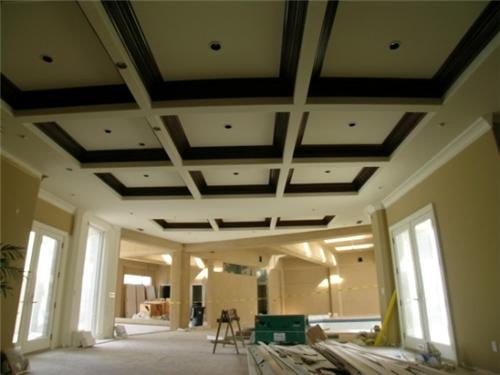 What type of paint is best for use in a home?
What type of paint is best for use in a home?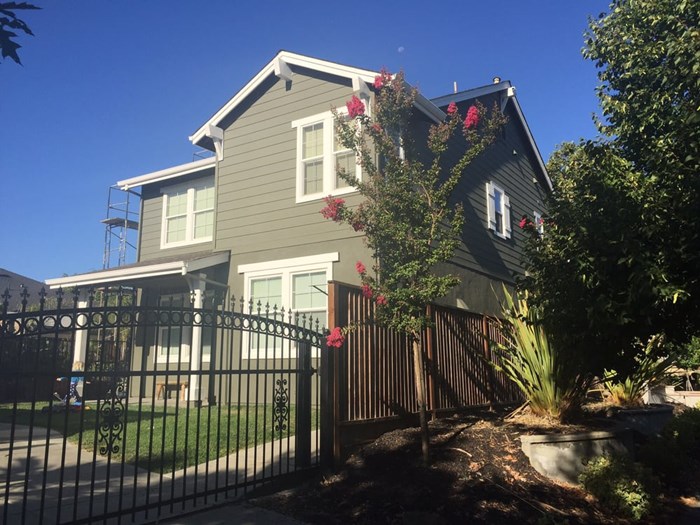 What are the best paint brands for residential painting?
What are the best paint brands for residential painting? What colors are the hardest to paint over?
What colors are the hardest to paint over? 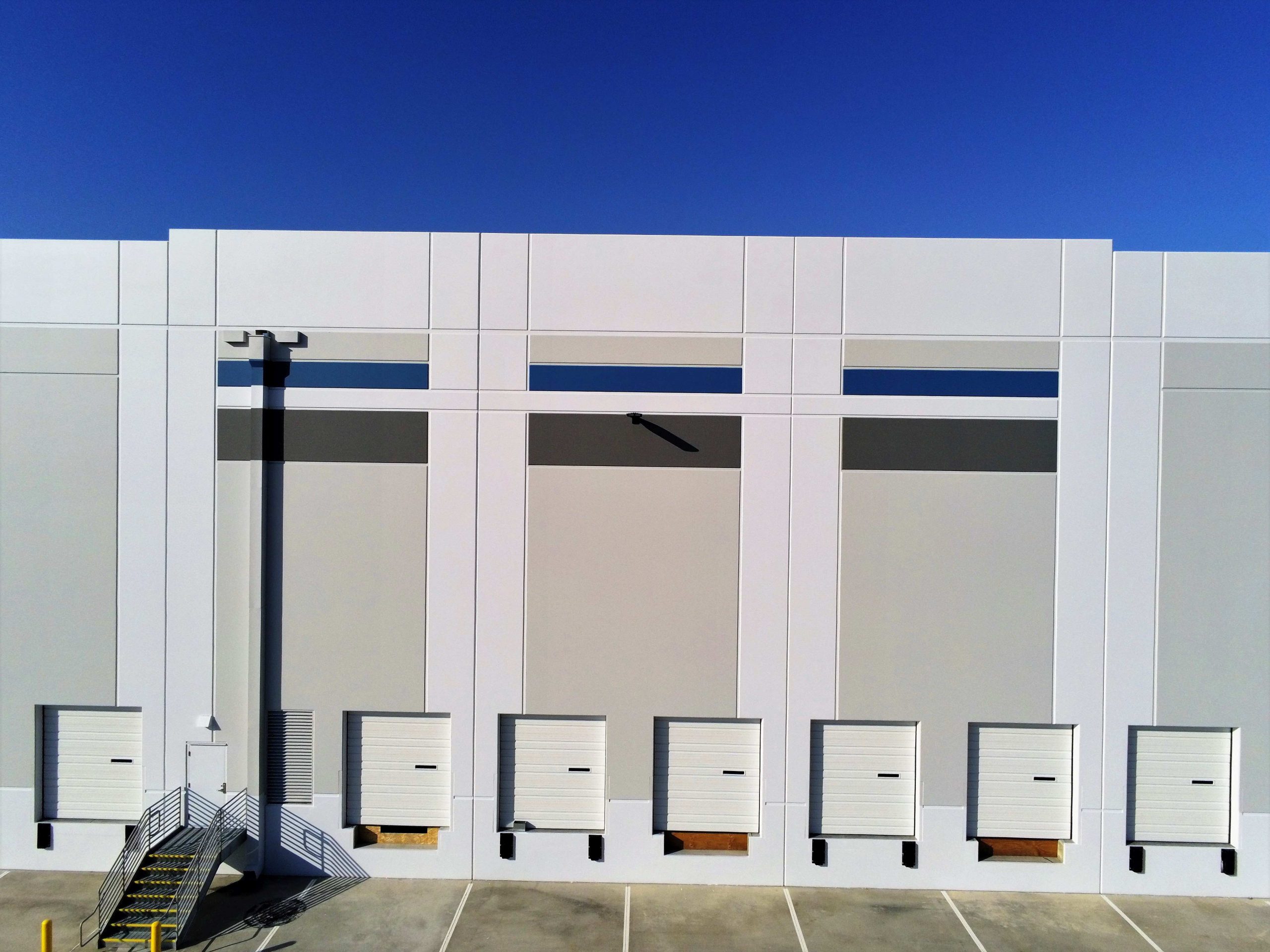
 Choose Custom Painting, Inc. as your partner for your next project!
Choose Custom Painting, Inc. as your partner for your next project!